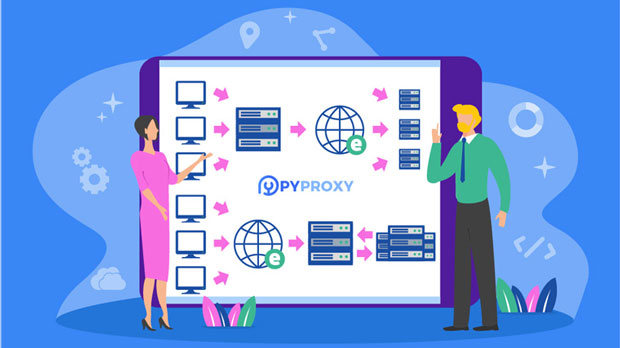In the world of digital marketing and online operations, the automation of tasks is a powerful tool that saves both time and resources. One of the biggest challenges faced by businesses managing multiple accounts is navigating access restrictions and CAPTCHAs that websites impose to prevent bot activities. This is where webpage unlocking tools come into play. These tools enable the automation of operations across multiple accounts by bypassing restrictions such as CAPTCHAs, geolocation checks, and IP blocks. In this article, we will explore the key role these tools play in multi-account automation and how they contribute to improving efficiency and effectiveness for businesses and marketers alike. Understanding the Role of Webpage Unlocking ToolsWebpage unlocking tools are designed to remove barriers that prevent automation tools from accessing websites or applications. They provide a solution to CAPTCHAs, IP blocks, and other anti-bot measures commonly used to restrict automated browsing. These tools allow businesses to automate tasks such as data scraping, content posting, and account management across multiple platforms without manual intervention. When a website detects automation, it often responds by presenting a CAPTCHA or blocking the IP address, which interrupts the workflow. Webpage unlocking tools resolve this issue by using various techniques such as rotating IPs, solving CAPTCHAs, or using proxy servers to mask automation traffic. By doing so, they allow businesses to maintain smooth and uninterrupted operations across multiple accounts, increasing productivity and minimizing human error.Breaking Down the Functions of Webpage Unlocking ToolsTo fully appreciate the significance of webpage unlocking tools in multi-account automation, it's crucial to break down their main functions:1. Bypassing CAPTCHAs CAPTCHAs are the most common anti-bot measures websites use. They require users to solve puzzles or identify objects in images to prove they are human. This is a significant barrier for automation tools. Webpage unlocking tools offer CAPTCHA solving capabilities that either use AI to automatically solve them or use external services to complete the task. By automating this process, businesses can continue their operations without manual intervention, thus saving time and avoiding delays.2. IP Rotation IP blocks are another major roadblock in multi-account automation. Websites often track users through their IP addresses and block suspicious or repetitive login attempts from the same IP. Webpage unlocking tools solve this problem by rotating IPs from a pool of proxies. This creates a network of distributed requests, preventing websites from detecting and blocking automation tools.3. Bypassing Geolocation Restrictions Many websites impose geographic restrictions on users, making it difficult for businesses with a global presence to operate efficiently. Webpage unlocking tools allow businesses to use proxies from different locations, thereby bypassing geolocation restrictions and enabling them to access region-specific content or services without limitations.4. Multi-Platform Support In today’s digital ecosystem, businesses operate across a wide variety of platforms. Webpage unlocking tools support automation across different websites, social media platforms, and online services, ensuring that businesses can manage multiple accounts and activities seamlessly.The Importance of Webpage Unlocking Tools in Multi-Account AutomationNow that we understand the core functions of webpage unlocking tools, let's delve into their importance for businesses managing multiple accounts.1. Efficiency and Time Savings By automating repetitive tasks such as login, content posting, and data scraping, webpage unlocking tools free up valuable time for businesses. This allows employees to focus on more strategic and creative tasks, enhancing overall productivity. Tasks that would typically take hours can now be done in minutes with minimal human input.2. Scalability As businesses grow, so does the need for handling a large volume of accounts. Managing multiple accounts manually is time-consuming and prone to error. Webpage unlocking tools ensure that automation is scalable, allowing businesses to manage hundreds or even thousands of accounts across multiple platforms without sacrificing accuracy.3. Reduced Human Error Manual operations are prone to human error, especially when dealing with repetitive tasks across multiple accounts. These errors can lead to inconsistencies in data, delayed responses, or even account suspension. Webpage unlocking tools ensure that automation processes are carried out consistently, reducing the likelihood of errors that can damage a brand's reputation or result in lost opportunities.4. Enhanced Customer Experience When businesses operate multiple accounts, whether for customer service, marketing, or e-commerce purposes, efficiency becomes key. By automating routine tasks and removing access barriers, webpage unlocking tools ensure that customer queries are responded to quickly, content is updated regularly, and transactions are processed without delay. This enhances the overall customer experience and builds trust in the brand.Practical Use Cases of Webpage Unlocking ToolsTo further understand the real-world applications of webpage unlocking tools, let’s take a look at a few practical use cases.1. Social Media Management Many businesses manage multiple social media accounts to engage with different customer segments. However, managing these accounts manually can be time-consuming, especially when dealing with CAPTCHAs or IP blocks. Webpage unlocking tools allow marketers to automate tasks like posting content, responding to messages, and analyzing data across different platforms, streamlining social media management.2. E-commerce E-commerce businesses often have multiple accounts on platforms like Amazon, eBay, or Shopify. These accounts are used for listing products, tracking sales, and managing customer interactions. Webpage unlocking tools enable e-commerce businesses to automate product listings, monitor inventory, and manage customer feedback across multiple accounts. This increases operational efficiency and helps businesses scale faster.3. Data Scraping Data scraping is a crucial process for businesses seeking to collect market data, competitor analysis, or customer insights. However, many websites block bots or restrict access to data through CAPTCHAs or IP bans. Webpage unlocking tools can bypass these restrictions, allowing businesses to collect data continuously from various websites without interruptions.4. Affiliate Marketing In affiliate marketing, managing multiple affiliate accounts is a common practice. Webpage unlocking tools assist affiliate marketers in automating account creation, managing links, and analyzing traffic data across multiple accounts. This automation significantly improves performance and increases revenue.Challenges and Considerations in Using Webpage Unlocking ToolsWhile webpage unlocking tools offer many benefits, it’s important to consider the challenges and potential risks associated with their use.1. Legal and Ethical Implications Some websites view the use of automation tools as a violation of their terms of service, and using webpage unlocking tools could potentially lead to account bans or legal action. It’s important for businesses to understand the legal implications of using these tools and ensure they are not violating any rules or regulations.2. Tool Reliability and Maintenance Not all webpage unlocking tools are equally reliable. Some may have compatibility issues with certain websites, while others may become ineffective if websites update their anti-bot measures. It’s important to select a reputable tool and stay updated on its capabilities to ensure consistent performance.3. Cost While webpage unlocking tools can provide significant time and cost savings, they can also come with a price tag. Businesses need to evaluate whether the tool’s benefits outweigh the costs involved and ensure that the investment aligns with their operational goals.Webpage unlocking tools play a pivotal role in multi-account automation operations, offering businesses a means to efficiently bypass barriers such as CAPTCHAs, IP blocks, and geolocation restrictions. By enabling seamless automation across multiple accounts, these tools help businesses save time, scale operations, and reduce human error. However, businesses must also be aware of the potential challenges and risks involved. By understanding the importance and applications of webpage unlocking tools, companies can make informed decisions that improve their efficiency and overall success in the digital world.
Nov 10, 2025



































































